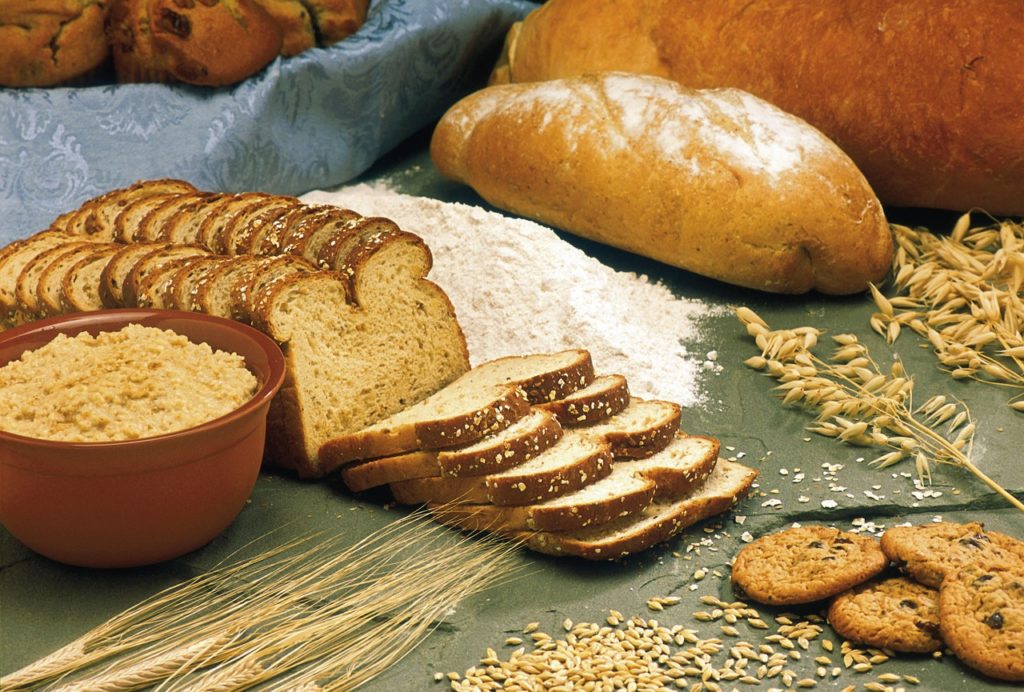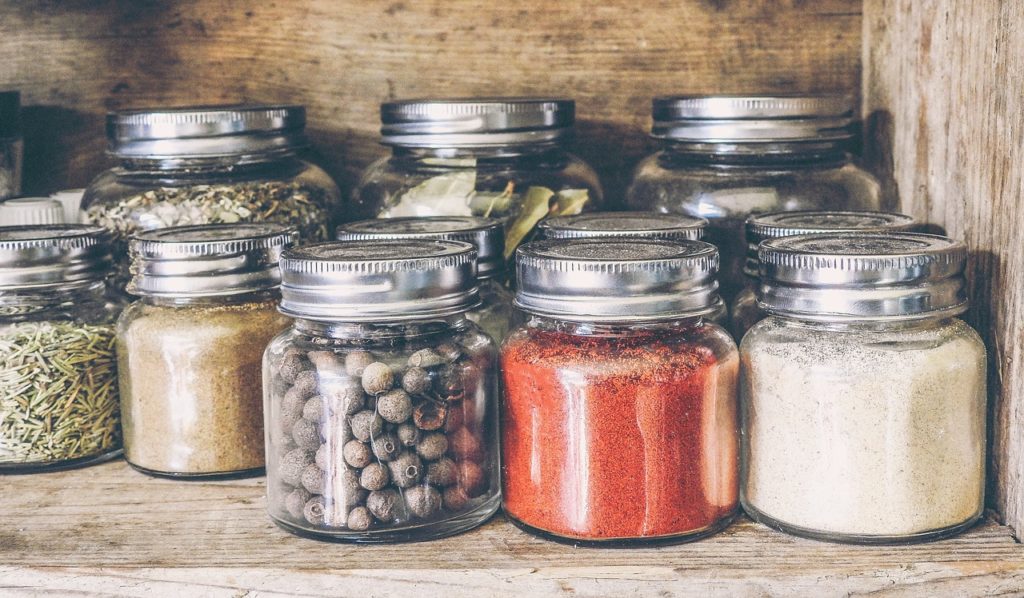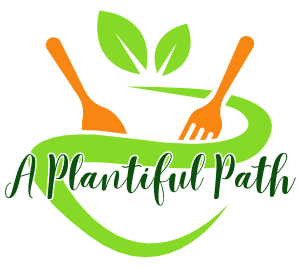Adopting a whole food plant based diet is so much easier when you know how to stock your plant based pantry. It may seem as though there is nothing to eat when you first eliminate animal based foods and processed foods from your diet. But with a well stocked pantry, you will be able to put together many delicious plant based meals.
What should your plant based pantry contain? (There is a link to a PDF file for a Plant Based Shopping List at the bottom of this page.)
As an Amazon Associate, I earn from qualifying purchases. This post may contain affiliate links.
Grains

Most of us are used to eating just a few grain products – wheat, rice, and corn. But there are so many others to enjoy. Grains are best eaten in their whole form, or as minimally processed as possible.
Some of the grain products I always have on hand are:
- Whole Wheat Flour
- Whole Wheat Pastry Flour
- Brown Rice
- White Rice
- Jasmine Rice
- Quinoa
- Barley
- Bulgur
- Steel Cut Oats
- Rolled Oats
- Popcorn
- Whole Grain Tortillas
- Corn Tortillas
- Whole Grain Bread
- Whole Grain Pastas
Legumes
Legumes are a great replacement for meat in many recipes. Add them to soups, stews, curries, and chilis. Puree them into dips. Legumes can be cooked on the stovetop, in a slow cooker, or in a pressure cooker. Precooked canned beans can also be purchased for convenience.
Some of the beans I always have on hand are:
- Black Beans
- Kidney Beans
- Pinto Beans
- Garbanzo Beans
- Navy Beans
- Brown Lentils
- Red Lentils
Vegetables

Always keep a rainbow of produce on hand. A good rule of thumb is to fill half your plate with vegetables. Fresh is always nice, but frozen can be just as nutritious, can be convenient, and can allow you to eat vegetables that may be out of season.
Most of my cooked recipes begin with onion and garlic, so I always have plenty of those on hand. Carrots, celery, and bell peppers are also very common in my recipes, and are great eaten raw with a dip.
And don’t forget the greens and cruciferous vegetables! Kale, spinach, lettuce, cabbage (red and green), and broccoli are most common in my kitchen, but there are many others to choose from: arugula, brussels sprouts, bok choy, cauliflower, collards, mustard greens, swiss chard. These vegetables are amazing for heart health!
Along with the grains and legumes, potatoes and sweet potatoes provide the starches that help fill us up.
The list of vegetables goes on and on! Mushrooms, peas, tomatoes, cucumber, artichokes, asparagus, summer and winter squashes…
There are so many vegetables, there’s no reason you have to eat foods you don’t like. But be willing to try something new once in a while. Just remember to eat a rainbow – and not the Skittles kind!
Fruits
As with vegetables, it’s a good idea to eat a rainbow of fruits. They are nature’s candy, but also full of vitamins, minerals, and antioxidants. Fresh fruit is wonderful, but frozen can expand the variety of fruits available when they are not in season. Be sure to always have several fruits on hand.
Herbs and Spices

Be sure to stock your plant based pantry with plenty of herbs and spices. There are so many of them to add flavor and interest to your dishes. Spices come in whole and ground forms, and herbs come in fresh and dried forms. Some of the ones I use the most are:
- Basil (fresh and dried)
- Bay Leaves
- Black Peppercorns
- Cayenne Pepper
- Chili Flakes
- Chili Powder
- Chipotle Chili Powder
- Chives (fresh chopped or dried)
- Cinnamon
- Cloves (whole and ground)
- Coriander (whole and ground)
- Cumin (whole and ground)
- Curry Powder
- Dill (dried)
- Garlic (powder, and granules)
- Ginger (fresh, and dried ground)
- Italian Seasoning Blend
- Marjoram
- Mustard Powder
- Nutmeg, ground
- Onion (powder and flakes)
- Oregano
- Paprika
- Parsley Flakes
- Rosemary
- Sage
- Salt
- Smoked Paprika
- Thyme
- Turmeric
Nuts and Seeds
Nuts and seeds can be a source of whole food protein. Seeds or chopped nuts can be sprinkled on salads, into stir fries, into oatmeal, and other dishes. They can also be pureed in to sauces to thicken them and add a source of whole food fat.
Raw cashews in particular create thick, creamy sauces.
Ground flax seeds are a good source of Omega 3 fatty acids. Sprinkle it on oats, cereal, salads, and more. Also, mixing a tablespoon of water with 3 tablespoons of ground flaxseed can be used as an egg substitute in some baking recipes.
Remember, nuts and seeds are a major source of fat. If you are trying to lose weight, or if you suffer from heart disease, use them sparingly.
Condiments and Sauces
Condiments and sauces are important to have for enhancing the flavor of foods. These are some that I always have in my plant based pantry.
- Barbecue Sauce
- Ketchup
- Maple Syrup
- Mustards (various)
- Soy Sauce or Tamari
- Vinegars (assorted)
- Salsas
- Tahini
- Vegan Worcestershire Sauce
- Miso
- Hot sauces
Specialty Ingredients
Nutritional Yeast
One ingredient I can’t get by without is nutritional yeast. Nutritional yeast is a form of yeast known as Saccharomyces cerevisiae. It’s grown on molasses, then washed, heated and dried to deactivate it. It comes in either a flake or powder form. If you use the powdered form, only use half the amount called for in a recipe.
Nutritional yeast adds an umami or savory taste to foods. And most nutritional yeast is fortified with vitamin B12. It is commonly used by vegans to contribute a cheesy flavor to foods. It’s great in cheese sauces and other sauces, tofu scrambles, soups and stews, sprinkled on popcorn, and other uses.
Black Salt
Black salt (Kala Namak) is a volcanic salt from the Himalayan region of India. It has a sulfurous flavor and odor that is similar to egg yolks. It’s perfect in all those recipes that need an “eggy” taste, like my Vegan Potato Salad, and my Tofu Scramble.
Tofu
Tofu is one of the few plant based protein sources that contains all nine essential amino acids. There are many different kinds of tofu. The two primary categories are regular and silken. They also come in different textures like soft, medium, firm, and extra-firm. Recipes will specify which kind to use.
Tofu is very bland, and takes on the flavors of ingredients it is cooked with. It can be made into sauces and dressings, scrambles and frittatas, and luscious desserts; added to soups, stews, and curries; marinated and baked, fried, or grilled, and more.
Non-Dairy Milks
The selection of non-dairy milks keeps growing. Stores now carry soy milk, almond milk, rice milk, cashew milk, and oat milk. I’ve even seen flax milk and pea milk. Try different ones and find ones that you like.
Miso
Miso is a fermented soybean paste that adds a salty, tangy, umami taste to recipes. There are different varieties, and the darker the miso, the stronger its taste. Since it is fermented, it is a good source of probiotics. It has a long shelf life. Uses for miso include soups, sauces, and vegetable dishes.
Thickening Agents
There are several ingredients that can be used as thickeners. Most all of us are familiar with cornstarch. Arrowroot is a good alternative for those who are sensitive to corn. Using tapioca flour results in a stretchy consistency. Agar is a gelatin substitute.
Grocery list PDF download
Here is the link to the Plant-Based Grocery List. This is a fairly comprehensive list, and you don’t need to purchase all of the items at once. Find some recipes you want to prepare, and use the checklist to check off the ingredients you’ll need for those recipes.
I hope you find this information and grocery list helpful!
For more information on following a plant based diet see:
